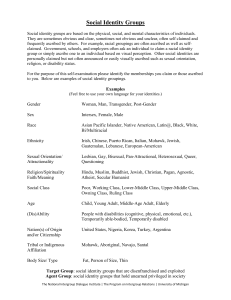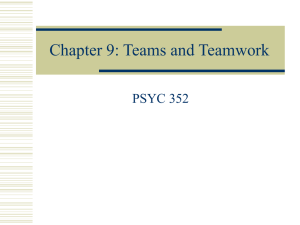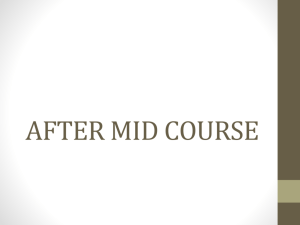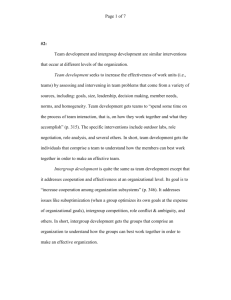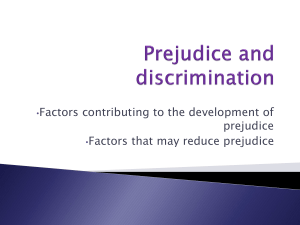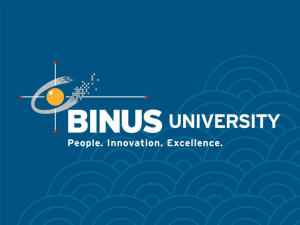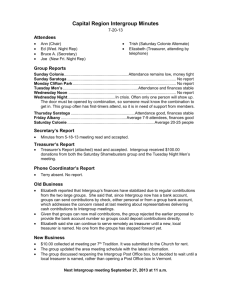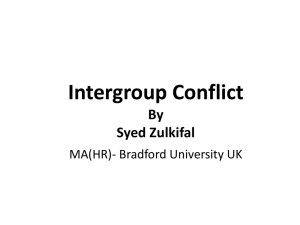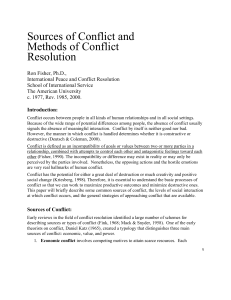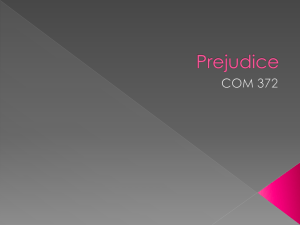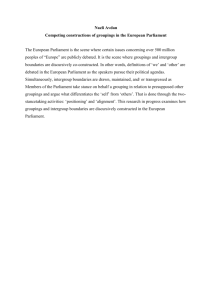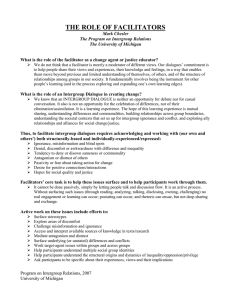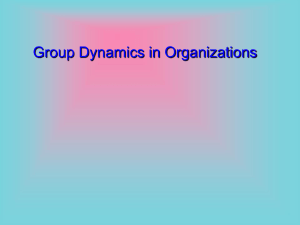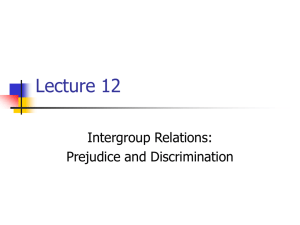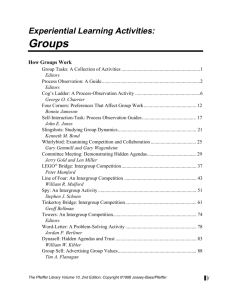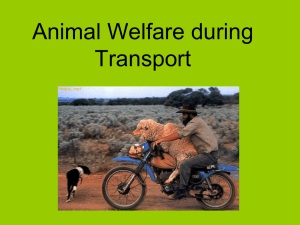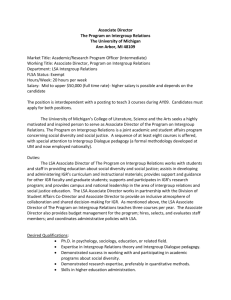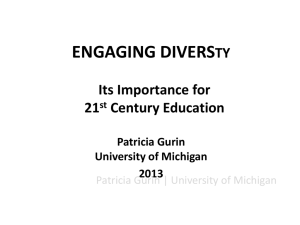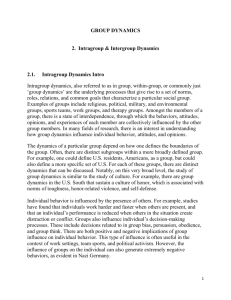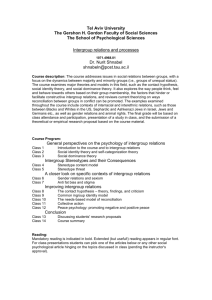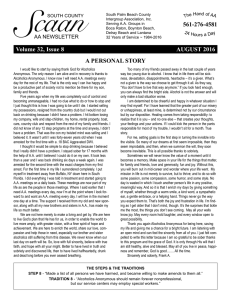Intergroup Development Interventions
advertisement
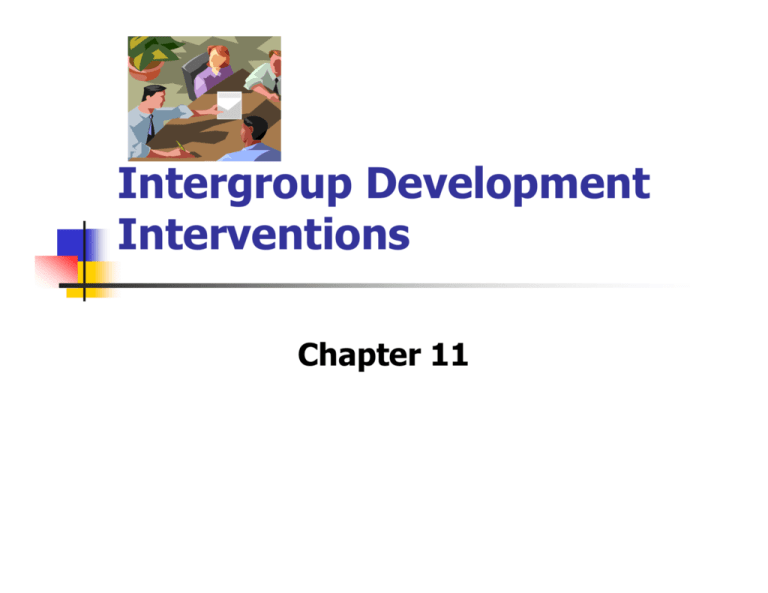
Intergroup Development Interventions Chapter 11 Learning Objectives Identify problems of intergroup conflict and suboptimizatin. Experience the negative effects of competition on organization effectiveness. Observe and develop strategies for collaborative intergroup relations Changing Relationship in Today’s Organizations Managers are concentrating their efforts on shared responsibilities among teams. Organizations create situations of team interdependence where the performance of one group is contingent upon another group. People and groups often fail to cooperative with others and may be in open conflict. OD Interventions Aim at improving interdepartmental interfaces and intergroup operating problems. Aim at developing effective working methods between teams. Collaboration and Conflict An organization, consisting of departments and divisions, requires cooperation to be effective. Differences in objectives, values, efforts, and interests occur between groups. It is evitable that conflict and competition between groups will occur. The dysfunctional nature of the conflict can be reduced with an emphasis placed on collaboration and cooperation. Intergroup Operating Problems Conflict between groups depends on how incompatible the goals are, the extent to which required resources are scarce and shared, and the degree of interdependence of task activities. Suboptimizatin occurs when a group optimizes it own subgoals but lose sight of the larger organizational goals. Intergroup competition involves groups with conflicting purposes or objectives. Perceived power imbalance between groups occurs when there is a perceived imbalance between units or when previous established relationships are altered. Intergroup Operating Problems Role conflict and role ambiguity Role conflict occurs hen and individual belongs to two or more groups who goals are in conflict. Role ambiguity exists when and individual of a group is not clear about his/her function, purposes, and goals. Personality conflict arises from interpersonal differences between members. Cooperation Versus Competition Though competition is often perceived to be beneficial, the research results of completion and cooperation among groups is mixed. Members of completive groups have more selfesteem for their groups. Group completing with one another are more highly oriented toward accomplishing the task, but there are a lack of evidence that completion will increase productivity. Research indicates that cooperation promotes productivity between groups when the task is complicated and required coordination. Managing Conflict Organizational conflict does not need to be eliminated but instead managed Diagnosed conflict situations involves learning the basic conflict styles used in dealing with interpersonal or intergroup conflict. Conflict style are based on 2 dimensions Desire to satisfy self Desire to satisfy others Five Styles/Cooperative vs. Assertive Behavior Avoiding- low concern for both self and others Obligating – low concern for self and high concern for others Dominating- high concern for self and low concern for others Compromising – moderate concern for self and moderate concern for others Integrating – high concern for self and others. Several OD Intergroup Techniques Dealing with conflicts openly provides a way to manage tension creatively. OD techniques for dealing with intergroup problem include third-party consultation, the organization mirrow, and intergroup team building. Third – Party Consultation Use a third party, usually an outside, practitioner, to help open communications, level power, and confront problems between groups. The their party provides diagnostic insight, is nonevaluative, and is a source of emotional support and skills. Organizational Mirror Gives work units feedback on how other elements of the organizational view them. Normally using a practitioner, the work group obtains specific information from other groups that it comes in contact with The units meet together to process the data with the objective of identifying problems and formulating solutions Intergroup Team Building Key members of conflicting groups meet to work on issue of interface. The meeting usually involves the following steps: Step 1. Working separately. Two work groups makes three lists: How we see ourselves How we think the other group sees us How we see the other person Step 2. Meeting with the other group, a spokesperson from each group presents their lists. Step 3. Group meet separately to discuss the information Step 4. Subgroups of five or six are formed by mixing members of the two groups. Their objective is to develop problemsolving alternatives with action plans. Step 5. A follow-up meeting is held to evaluate progress. References Brown, D.R. & Harvey, D. (2006). An experiential approach to Organizational development, (7th ed.). ,Upper Saddle River, NJ: Prentice Hall.
